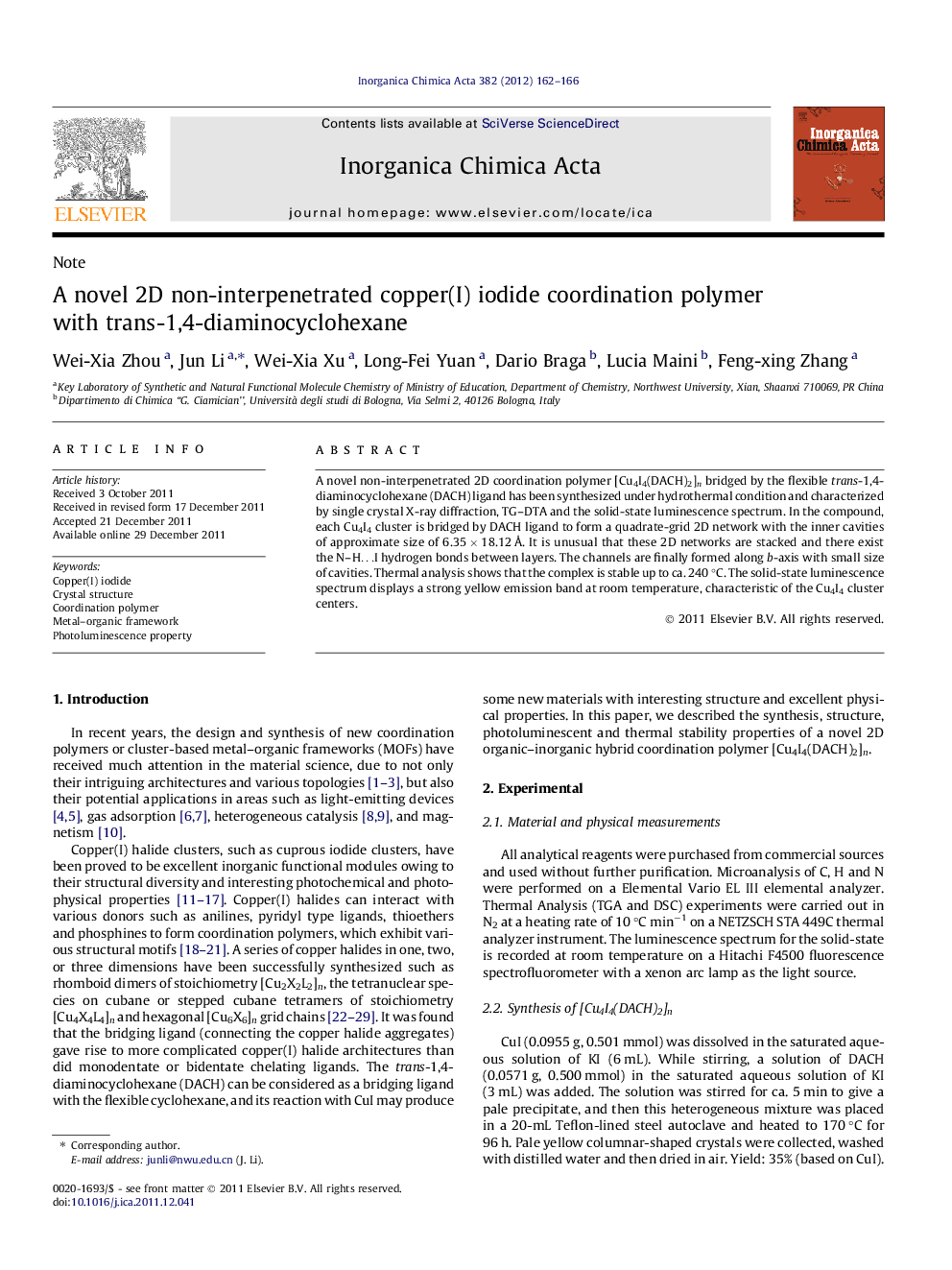| Article ID | Journal | Published Year | Pages | File Type |
|---|---|---|---|---|
| 1307331 | Inorganica Chimica Acta | 2012 | 5 Pages |
A novel non-interpenetrated 2D coordination polymer [Cu4I4(DACH)2]n bridged by the flexible trans-1,4-diaminocyclohexane (DACH) ligand has been synthesized under hydrothermal condition and characterized by single crystal X-ray diffraction, TG–DTA and the solid-state luminescence spectrum. In the compound, each Cu4I4 cluster is bridged by DACH ligand to form a quadrate-grid 2D network with the inner cavities of approximate size of 6.35 × 18.12 Å. It is unusual that these 2D networks are stacked and there exist the N–H…I hydrogen bonds between layers. The channels are finally formed along b-axis with small size of cavities. Thermal analysis shows that the complex is stable up to ca. 240 °C. The solid-state luminescence spectrum displays a strong yellow emission band at room temperature, characteristic of the Cu4I4 cluster centers.
Graphical abstractA novel non-interpenetrated 2D coordination polymer [Cu4I4(DACH)2]n bridged by the flexible trans-1,4-diaminocyclohexane (DACH) ligand has been synthesized and characterized. The structure of the compound shows that each Cu4I4 cluster is bridged by DACH ligand to form a quadrate-grid 2D network and these 2D networks are stacked by the interaction of hydrogen bonds, and the channels are formed finally. The complex displays an exceptionally thermally stability and a strong photoluminescence at room temperature in the solid state.Figure optionsDownload full-size imageDownload as PowerPoint slideHighlights► A novel 2D non-interpenetrated CuI coordination polymer constructed from Cu4I4(DACH)4 tetrahedral units has been described. ► The structure shows an uncommon stack along b axis. ► The complex shows a strong photoluminescence at room temperature in the solid state. ► The complex is exceptionally thermally stable.
